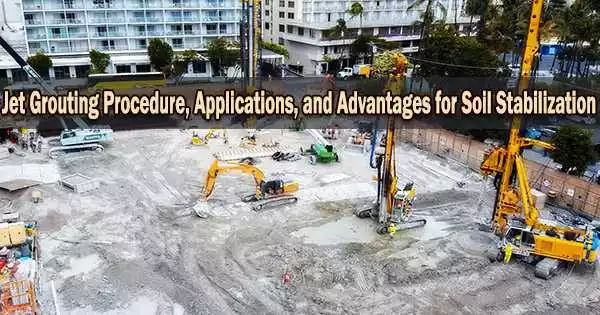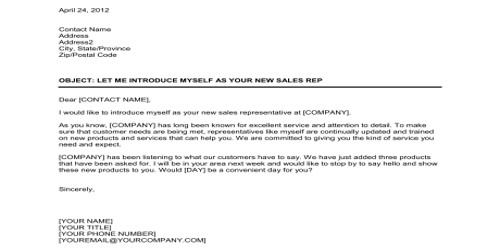A technique for soil stabilization or ground improvement is jet grouting. A review of the evolution that jet grouting has undergone over time can be seen by looking at its history and the demand for it today as a ground improvement technique. The approach is currently at a position where it can offer practical answers for the majority of geotechnical issues. The popularity and strong demand are because of ongoing technological advancements.
What is Jet Grouting?
By injecting a stabilizing fluid into the subsoil (or the soil being treated) at high pressure and high velocity, jet grouting is a technique for stabilizing soil. A certain amount of site preparation and injection machinery are required for the injection process.
The soil is stabilized by jet grouting as a result of the grouted fluid within the soil hardening. The earth is stabilized by these hardened entities, which take the shape of grouted columns in various numbers depending on the need. These columns are called as jet columns or jet grouted columns.
Jet Grouting Procedure
The first step is to select the region where the soil needs to be treated and to drill a hole to the necessary depth. How deep the weak subsoil is determines the depth. The hole that is being drilled might only be 10 to 20 cm in diameter. The desired depth can be reached by spinning a drilling system under strong pressure. The equipment must then be positioned over the drill hole to begin the injection operation.
A jet grouting string with a diameter of roughly 7 to 10 cm makes up the equipment. It has a nozzle at the end of the string so that a faster injection may be made. The nozzle has a tiny diameter, between 1 and 10 mm.
The string is now elevated and slowly spun at the beginning to fill the entire column surface with soil and the fluid system that has to be injected. Now the main jetting starts. As it progresses the fluid is injected (through a rotary motion) and the string is raised.
Now, in the middle of the procedure, a portion of the mud in the newly produced pit and the fluid mixture rises to the top and is referred to as spoil. This indicates that the grout and dirt mixture at the bottom has completely sealed it. Depending on the depth of treatment, the string is raised every 40 to 100 millimeters during the process.
There is a rotation for each increase. There are some systems where the raising and string rotation are both ongoing processes. Regardless of the approach used, the equipment’s rotational speed is maintained constant, which will help us produce a grouting column that is correctly tuned.
Jet Grouting Methods
The technique of jet grouting now varies depending on the fluid system used for the grouting process. Mainly the available techniques are grouped in three main jet grouting systems namely:
- Single
- Double
- Triple fluid systems
Which are classified based on the number of the fluids injected into the subsoil. The fluids are:
- Grout i.e. Water + Cement for single fluid
- Air + Grout for double fluid
- Water, air and grout for triple fluid
Based on the number of fluids employed the jet grouting strings are made up of different pipe types.
Single Fluid Jet Grouting System
When using a single fluid system, one or more nozzles are used to inject the W-C grout into the ground. Here, the same fluid is used to remold the dirt and then cement it.
One fluid performs both the binding action and the surplus spoil removal activities. A drawback of this system is that it loses a lot of kinetic energy. This is a result of the high friction that exists, making it challenging for a single fluid to manage on its own.
Double Fluid Jet Grouting System
In the double fluid system of jet grouting, the soil disaggregation and cementation processes are carried out by a single fluid, i.e., water-cement grout. The distinction is that the grout jet is transmitted to a region of air, which increases the efficacy of lowering energy loss. For this, a coaxial annual nozzle is placed around the grouting nozzle to give a more adequate air jet. Here, the airlift is used to remove the extra soil.
Triple Fluid Jet Grouting System
Here, the separation between cementation and soil remolding is evident. Using a high-velocity water jet and air, the dirt is loosened. An annular nozzle identical to the one used for the double system supplies the coaxial air jet that powers the water jet.
Following that, the water-cement grout is removed from a different nozzle that is attached to the lower portion of the monitor or nozzle. Grout is used to cement dirt that has previously been reshaped by a water jet. Due to this reason the grout is delivered at a lower velocity.
Applications of Jet Grouting –
Jet grouting finds is a method of ground improvement and finds applications in the following:
- For construction of horizontal barriers
- Control of groundwater: Around dams or in areas with contaminated soil, jet columns can serve as horizontal barriers to control groundwater. Additionally, this lessens the soil’s permeability.
- Underpinning: Jet grouting is a technique that can be used to strengthen foundation systems, namely those that are shallow. To create a stable bed underneath the footing for better load distribution, the method entails drilling through the neighboring foundation.
- Tunneling: Jet grouting stabilizes the area where the tunnel is being built so that the heavy machinery needed for tunneling can be used without causing instability in the surrounding areas.
- Support for excavation
Advantages of Jet Grouting –
Jet grouting provides with the following advantages when implemented which are the root causes behind its success:
- Large cemented material column creation without causing huge ground disturbances (subsoil)
- Columns create continuous elements with a variety of shapes, which enhance the mechanical properties and reduce porosity.
- Improvement in construction process thus emerging out with a better design philosophy
- It’s attractive nature in terms of confined space working and under difficult site conditions
















